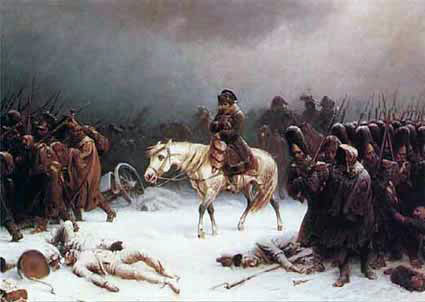Shipwreck Thwarted Napoleon's Advance

A tactfully sunken ship might have blocked Napoleon from entering a Middle Eastern port on his quest to conquer the British Empire in Egypt and India, and sent the future emperor retreating back to France.
A new study of the ship's excavated cargo will help marine archaeologists analyze the role of sunken ship and reconstruct the 61-day battle between the British and Napoleon's army at the entry to the Israeli city Akko, known then as Acre, more than 200 years ago.
Over the past 40 years, notable marine archaeologists have examined the wreck, yet no one has come to any agreement as to why the 30-meter-long ship entered the shallow waters of the harbor.
"The origin of the wreck and its place in the maritime history of Akko remain a mystery," said Debbie Cvikel from the Leon Recanati Institute for Maritime Studies and the Department Of Maritime Civilizations at the University of Haifa. "One of the possibilities is that She was scuttled by [Royal Navy officer] Sidney Smith in 1799, in order to block the harbor against Napoleon Bonaparte."
A map drawn by a British soldier in 1799 depicts the British navy in combat with Napoleon's ships. In the illustration, a symbol of a sunken ship marks the exact location of the wreck.
Cvikel and colleagues have found the wreck well-preserved, including lead shots and cannon balls [image]. The angle and precise spot of one cannon ball lodged into the bottom of the hull appears to have been shot on purpose.
Further research on this shipwreck could also shed light on a so-far unstudied chapter in the maritime history of the city of Akko at the end of the 18th century.
Sign up for the Live Science daily newsletter now
Get the world’s most fascinating discoveries delivered straight to your inbox.
From the mid-1700s to the mid-1800s, Akko was considered the key to the East and became a battleground between European powers. Fleets from the shores of Europe and the Levant area in the Middle East reached the harbor where ships were sunk in it and in its surroundings.
"At this stage, I believe we have more than one wreck in Akko harbor," Cvikel told LiveScience.
More to Explore
- Mystery of Napoleon's Death Said Solved
- Fact of Fiction: Take the Titanic Quiz
- Top 10 Unexplained Phenomena
- How Weather Changed History
News of Other Shipwrecks
- Ship from 8th Century Found in Mediterranean
- Greek Shipwreck from 350 BC Revealed
- Cannon Raised from Sunken Ship of Dread Pirate Blackbeard
- 1849 Shipwreck Found in Lake Ontario
- How to Preserve a 460-Year-Old Shipwreck









